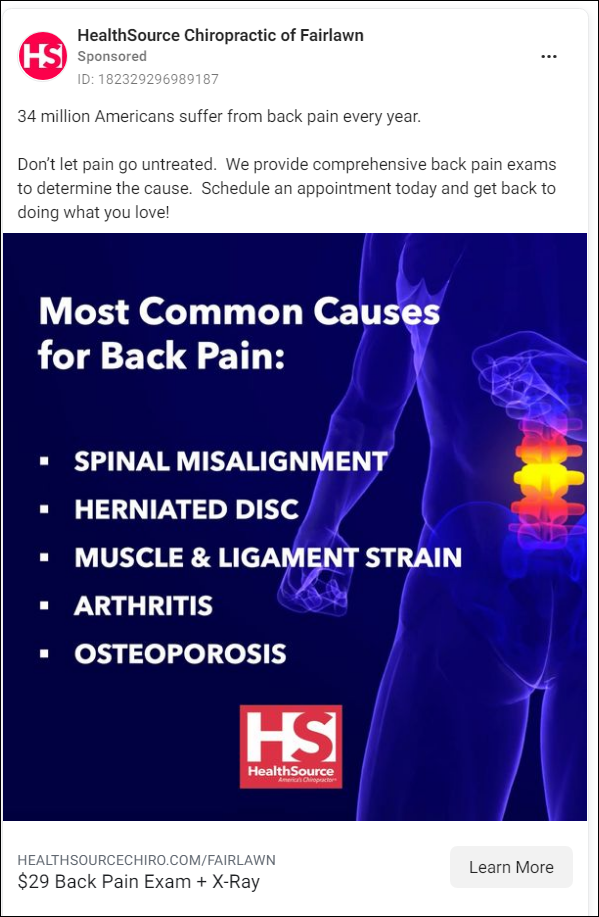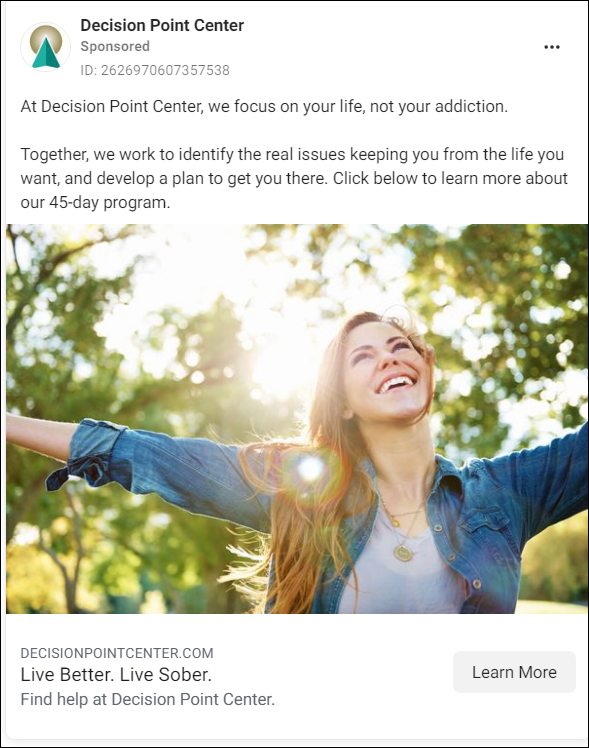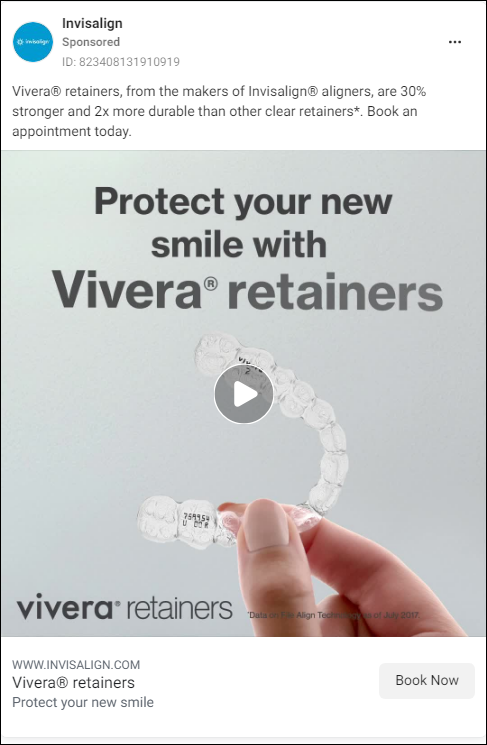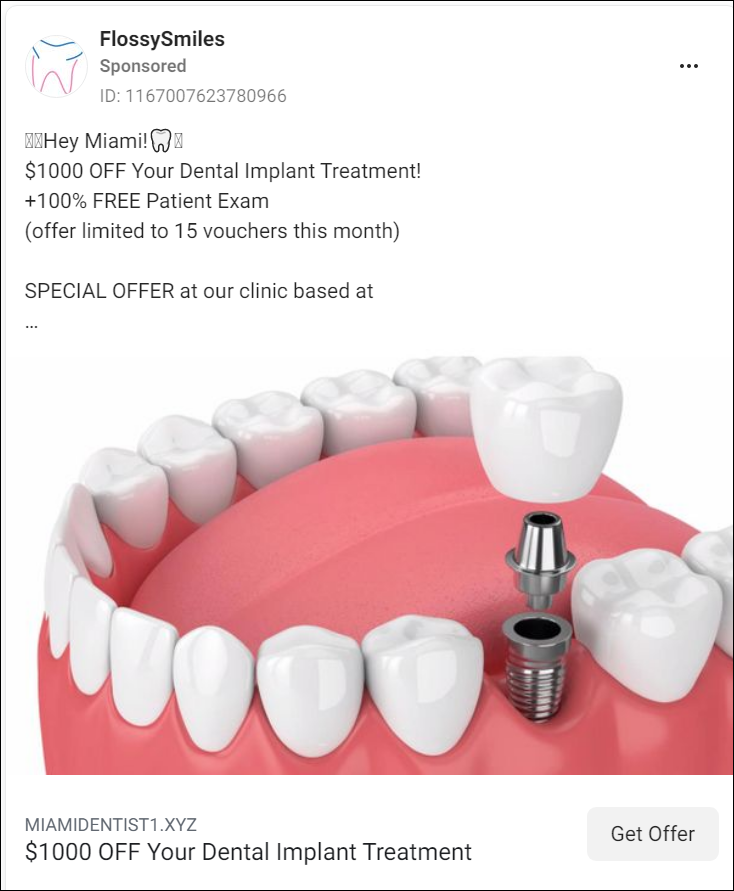What if we told you that around 40 percent of the world’s total population was active on Facebook every day? It’s an over-the-top number, but it’s true: Facebook has more than 2.99 billion monthly active users (a number that’s increasing by ten percent annually). So when we tell our clients that Facebook advertising is an effective way to engage healthcare consumers, build brand awareness, and drive leads, we really mean it.
We also tell our clients how easy it is to blow your advertising budget on top-of-funnel nonsense if you don’t know how to refine your target audience. Building a tight audience isn’t that easy anymore either. The U.S. Department of Health and Human Services (HHS) has released guidelines making it clear that advertisers can’t use personal health information (PHI), and their definition of what constitutes PHI includes the Meta Pixel.
This is where a full-funnel advertising strategy comes into play. Read on to learn how to engage patients with HIPAA-compliant social advertising.
Understanding How Patients Move Through the Journey
One of the primary advantages of a full-funnel approach to Facebook Ads is the ability to build an audience of engaged prospects that are more likely to convert. It’s about timeliness and relevance, really. You are showing the right message at the right time. Done correctly, this approach can effectively keep your cost per acquisition (CPA) down while keeping your pipeline full.
Doing so requires a bit of empathy. Meaning, you need to develop a deep understanding of:
- How your patients become aware of healthcare problems
- Where, when, and how they seek solutions
- How they evaluate providers
- What goes into their final decision to proceed
- What kind of content, data, and messaging they need to see at each stage
What we’ve found is that you really can’t force actions that don’t align with the stage that a given patient is at. If someone is still in the consideration stage about an elective dental procedure, for example, an appointment booking ad isn’t appropriate. They’re not even sure what service or healthcare treatment they need, which means generating a conversion is unlikely.
On the other hand, someone ready to select a provider and move forward doesn’t need to see your top-of-funnel, awareness-building content—they’re already familiar with your brand. Instead, they need supporting data and a solid offer to bring them across the finish line.
RELATED: How 3 DSOs Are Accelerating Growth with Digital Advertising
HIPAA Regulations & Facebook’s Meta Pixel
First and foremost, always ensure compliance with HIPAA regulations when engaging in any advertising efforts targeting healthcare consumers. With recent regulatory updates heavily impacting the healthcare industry, it’s paramount to ensure patient privacy and trust. Using Meta’s tracking pixels on your website is not HIPAA-compliant, so it’s important to adopt technology and data management practices to control what data you’re sending to Facebook.
In addition to removing the Meta Pixel, you shouldn’t be uploading patient email lists or building lookalike audiences. Those activities share PHI and violate HIPAA.
In the absence of the Meta Pixel, it’s crucial to maximize the targeting capabilities within the platform itself. This means using Facebook’s built-in targeting tools and creating high-quality, high-value ad content, including conversion-optimized messaging, beautiful graphics, and video.
RELATED: Privacy First: Marketing Technologies That Prioritize HIPAA Compliance
Full-Funnel Facebook Advertising Strategy for Healthcare
A full-funnel approach to social media ads is designed to reduce the overall cost to generate a lead at the bottom of the funnel. In our experience, serving direct-response ads to prospects who have never interacted with your brand before can drive up CPA costs by more than 400 percent.
There’s no need to reinvent the wheel here. Healthcare consumers on Facebook typically break down into three categories:
- Awareness
- Consideration
- Decision (ready to convert)
It’s critical that we deploy a full-funnel approach to keep our reach wide where ad serving costs are low and push only those qualified audiences down the funnel to our call-to-action (CTA) ads. That’s why we use tight ad group structures to better identify what stage of the funnel a prospect is in, then serve them a message relevant to where they’re at in their decision-making process. If they engage with a specific ad, that is a signal to us where they’re at in the journey. With that information, we can then show them the ads they’ll be most likely to respond to.
Here’s what that looks like in practice.
How to Create Facebook Ad Campaigns Along the Patient Journey
In a full-funnel model, your ad group structure will be built around the four awareness levels that comprise most ad awareness hierarchies, namely:
Problem Aware
At this stage, a person knows they have an issue but is not aware of potential solutions. In fact, they might not even be actively seeking a solution at all. A person suffering from a chronic back condition, for example, might simply be looking to learn more about what they’re dealing with.
At the problem-aware stage, healthcare consumers don’t want to be sold or convinced. Instead, they’re likely looking for authoritative information about their problem that does one or more of the following:
- Names the condition and symptoms
- Educates patients about what they’re experiencing and why
- Lays out potential complications, considerations, and treatments
- Tells a story they can relate to
At this point, your job is to create ad content that leads to website content that creates value upfront. This might be “pillar” content, introductory guides, or even video overviews. Why? Because patients at the problem-aware stage aren’t ready to pick a provider yet or make an appointment. Instead, they need a reason to get to know your practice better and begin the relationship-building process. Articulating their problem in clear, authoritative terms that they understand is the best place to start.
From there, you can begin detailing the solution to their particular problem.

Solution Aware
On the other hand, a solution-aware consumer is in the process of evaluating different solutions to their problem. They might even be ready to pick up the phone or put their credit card down. In this context, our healthcare consumer with chronic back pain might be piqued by an ad from a chiropractor like you who specializes in treating this particular condition.
Remember that they might even know your chiropractic practice exists, though they may have visited your site in the recent past. Either way, you’ll want to target or retarget them with ads that lead to a walkthrough of your particular treatment, for example. Perhaps a short (30-60 seconds) video covering the benefits of your approach compared to other treatments for this condition. Any content that demonstrates why your solution is a viable treatment for their problem.

Product Aware
The product-aware needs convincing that one solution is better than another. Chronic back condition hurts them just like the next person, but they’re not entirely convinced that your treatment is best. At this stage, you’ll want to create content that summarizes your solution more concisely, makes the benefits real (using a testimonial, perhaps), and disarms or overcomes any objections. These objections might include skepticism about chiropractors, for example, or the likelihood that they’ll get the outcome they’re looking for.
This is also the time to go through the other leading “products” and explore their benefits and drawbacks compared to your own. A chiropractor might be competing with a common surgical procedure, physical therapist, or pharmaceutical solution that addresses chronic back pain. Ads and messages that perform well at this stage of awareness perform the function of a product comparison, “unboxing” each solution, walking the consumer through the details (objectively), and laying out the pros and cons.

Most Aware
At the most aware stage, your audience likely knows and trusts your brand. That person with chronic back pain has passed through the other stages of your ad funnel and encountered other content and messaging. Maybe they were already aware of your practice outside of Facebook.
Now is the time to get them over the finish line with a good offer. In the world of healthcare, a good “offer” might be a free 60-minute evaluation, complimentary video chat, or even a discount on a bundle of sessions. Something that incentivizes them to pull the trigger and choose you.

These ads ought to point to content that details the offer, clarifies what the consumer should expect if they opt-in, and guides them to the next step (schedule, call, register, and so on). The most-aware stage is where an optimized landing page works best as an offer. Once there, address their every motivation and barrier, and you’ll increase conversions.
Why the Full-Funnel Approach to Facebook Ads Works
This approach to Facebook advertising tends to generate more high-quality leads, at a lower cost, for a couple of reasons:
- You’re adapting ad creative and messaging as the consumer moves through the patient journey.
- People are less likely to encounter irrelevant ad content (thanks to audience targeting and tailored messaging).
- Custom audiences and campaigns are closely aligned with the consumer’s stage within the awareness cycle .
- You more effectively generate awareness, warm people to your brand and services, then nurture these audiences toward a lower-cost conversion.
- You make full use of the various advertising tools made available by Facebook.
At Cardinal Digital Marketing, we frequently build full-funnel ad strategies for healthcare brands. We anchor these strategies in a few key areas:
- Intent-optimized keyword strategy, audience targeting, and ad creative
- Refined account structure
- High-quality, high-value content, including conversion-optimized messaging, beautiful graphics, and video
- Precise retargeting campaigns to catch people who engage but would otherwise slip through the cracks
- Thorough, conversion-optimized landing pages for each campaign
- Patient testimonials and other trust-building content
- Strong promotional offers and CTAs
Smile Design Dentistry, for example was poised to reap profound benefits from a more full-funnel approach to acquisition across paid search and social media. Smile design saw an increase in brand search volume for locations with social campaigns, which indicates social’s positive impact on brand awareness and demand. Smile Design ultimately achieved a 30% decrease in cost per call and a 20% increase in PPC conversion rate. See how Smile Design did it.

